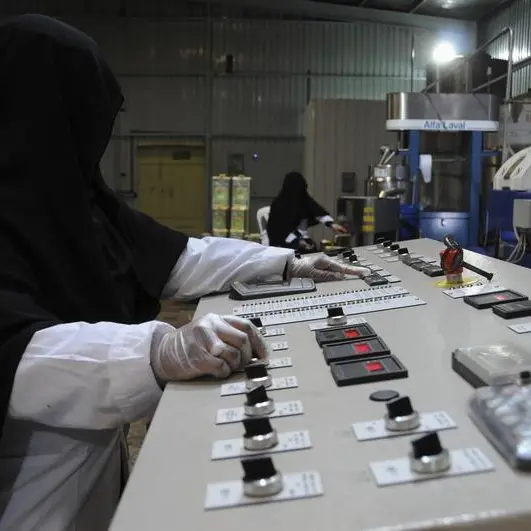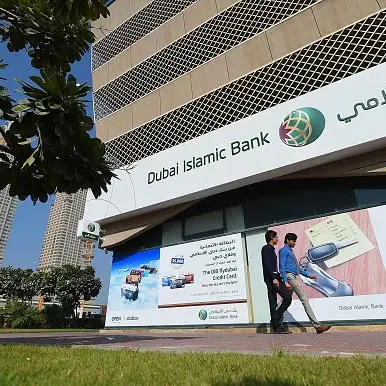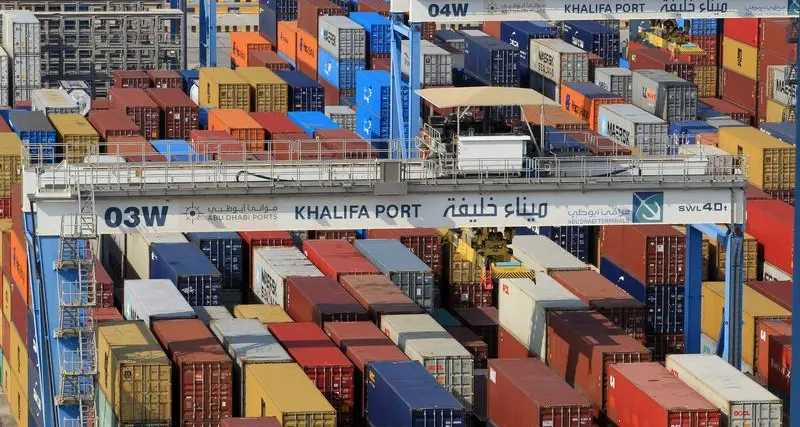29 June 2015
MUSCAT: The overall balance of payments (BoP) position in the Sultanate indicates a surplus of RO 429 million during 2014 leading to a rise in foreign exchange reserves by the same amount. According to the Central Bank of Oman (CBO), the foreign exchange reserves increased by RO 233 million while government reserves increased by RO 196 million. "The balance of payments position for the Sultanate of Oman remained comfortable during 2014", the apex bank says in its annual report for 2014 to be released today.
Reflecting the country's overall balance of payments position, the foreign assets of the CBO at the end of 2014 increased by 2.3 per cent to RO 6,276.9 million compared to RO 6,133.3 million at the end of December 2013.
Total merchandise exports amounted to RO 20.5 billion during 2014, representing a decline of 5.7 per cent from 2013. Merchandise imports fell by 13 per cent from 2013 to RO 10.7 billion during the year under review. The bulk of imports included mineral products, electrical machinery and mechanical equipment and transport equipment.
The merchandise trade surplus increased to RO 9.7 billion during 2014 from RO 9.4 billion in the previous year.
"The services, income and current transfers continued to be in a deficit mode, given the nature of the Omani economy", the CBO report informs.
The combined deficit on these three accounts rose to RO 8.2 billion during 2014 from RO 7.4 billion during 2013. The net effect was a surplus current account at about RO 1.6 billion in 2014 compared to a higher surplus of RO 2.0 billion registered in the previous year.
"The evolution of monetary aggregates in Oman during 2014 has been consistent with the policy stance of CBO aimed at ensuring adequate liquidity in the system, maintaining orderly conditions in the markets and supporting faster growth", the report points out.
Reflecting sustained growth of the Omani economy, broad money supply (M2) increased by 15.3 per cent in 2014 compared to 9.4 per cent in the previous year.
Similarly, the expansion of total bank credit of conventional and Islamic banks together was higher at 15.0 per cent in 2014 compared to 9.0 per cent in 2013. Aggregate deposits held with the banks also registered a higher growth of 14.0 per cent in 2014 as compared to 11.2 per cent in 2013. Liquidity condition continued to remain comfortable throughout 2013 and 2014, as evident from the large roll over of CBO CDs in the weekly auctions. Given comfortable liquidity condition, domestic interest rates softened considerably.
Interest rates in Oman have been deregulated since 1993 and moved with market forces except for the personal loan segment for which an interest rate ceiling applies. Currently the ceiling stands at 6.0 per cent per annum for all loans extended from October 2, 2013.
"The Central Bank of Oman has been proactively taking measures to strengthen the banking system in the Sultanate. The CBO is well ahead in the implementation of Basel III framework", reveals the report.
The final guidelines on Basel III were issued in November 2013. Again, the risk-based supervision framework for on-site examinations has been fully implemented since 2012.
In order to strengthen the risk assessment procedures, CBO had issued guidelines to banks for the implementation of the Internal Capital Adequacy Process (ICAAP) which has been operationalised by all banks in Oman from December 31, 2012.
Prompt Corrective Actions with revised trigger points like changes in capital adequacy requirement of banks is being emphasised further. Additionally, several steps are being taken to promote SMEs for diversification and growth of the economy and the potential for increased job opportunities.
The CBO advised banks to formulate a liberal lending policy for the SME segment and mandated that they should allocate at least 5 per cent of their total credit to SMEs and this target is to be achieved latest by December 2015. The prudential requirements for banks to lend to SMEs have also been relaxed in terms of general provisioning requirements and risk weightage.
Despite increase in the size of the banks' balance sheets, the gross non-performing loans (NPLs) continued to remain low. The gross NPLs as percentage of total credit and net of reserve interest stood at 2.1 per cent with similar ratio prevailing in December 2013. The capital adequacy ratio stood at 15.4 per cent of risk-weighted assets in December 2014.
Consistent with the accommodative monetary policy, the liquidity situation remained robust in the banking system during 2014, adds the report.
MUSCAT: The overall balance of payments (BoP) position in the Sultanate indicates a surplus of RO 429 million during 2014 leading to a rise in foreign exchange reserves by the same amount. According to the Central Bank of Oman (CBO), the foreign exchange reserves increased by RO 233 million while government reserves increased by RO 196 million. "The balance of payments position for the Sultanate of Oman remained comfortable during 2014", the apex bank says in its annual report for 2014 to be released today.
Reflecting the country's overall balance of payments position, the foreign assets of the CBO at the end of 2014 increased by 2.3 per cent to RO 6,276.9 million compared to RO 6,133.3 million at the end of December 2013.
Total merchandise exports amounted to RO 20.5 billion during 2014, representing a decline of 5.7 per cent from 2013. Merchandise imports fell by 13 per cent from 2013 to RO 10.7 billion during the year under review. The bulk of imports included mineral products, electrical machinery and mechanical equipment and transport equipment.
The merchandise trade surplus increased to RO 9.7 billion during 2014 from RO 9.4 billion in the previous year.
"The services, income and current transfers continued to be in a deficit mode, given the nature of the Omani economy", the CBO report informs.
The combined deficit on these three accounts rose to RO 8.2 billion during 2014 from RO 7.4 billion during 2013. The net effect was a surplus current account at about RO 1.6 billion in 2014 compared to a higher surplus of RO 2.0 billion registered in the previous year.
"The evolution of monetary aggregates in Oman during 2014 has been consistent with the policy stance of CBO aimed at ensuring adequate liquidity in the system, maintaining orderly conditions in the markets and supporting faster growth", the report points out.
Reflecting sustained growth of the Omani economy, broad money supply (M2) increased by 15.3 per cent in 2014 compared to 9.4 per cent in the previous year.
Similarly, the expansion of total bank credit of conventional and Islamic banks together was higher at 15.0 per cent in 2014 compared to 9.0 per cent in 2013. Aggregate deposits held with the banks also registered a higher growth of 14.0 per cent in 2014 as compared to 11.2 per cent in 2013. Liquidity condition continued to remain comfortable throughout 2013 and 2014, as evident from the large roll over of CBO CDs in the weekly auctions. Given comfortable liquidity condition, domestic interest rates softened considerably.
Interest rates in Oman have been deregulated since 1993 and moved with market forces except for the personal loan segment for which an interest rate ceiling applies. Currently the ceiling stands at 6.0 per cent per annum for all loans extended from October 2, 2013.
"The Central Bank of Oman has been proactively taking measures to strengthen the banking system in the Sultanate. The CBO is well ahead in the implementation of Basel III framework", reveals the report.
The final guidelines on Basel III were issued in November 2013. Again, the risk-based supervision framework for on-site examinations has been fully implemented since 2012.
In order to strengthen the risk assessment procedures, CBO had issued guidelines to banks for the implementation of the Internal Capital Adequacy Process (ICAAP) which has been operationalised by all banks in Oman from December 31, 2012.
Prompt Corrective Actions with revised trigger points like changes in capital adequacy requirement of banks is being emphasised further. Additionally, several steps are being taken to promote SMEs for diversification and growth of the economy and the potential for increased job opportunities.
The CBO advised banks to formulate a liberal lending policy for the SME segment and mandated that they should allocate at least 5 per cent of their total credit to SMEs and this target is to be achieved latest by December 2015. The prudential requirements for banks to lend to SMEs have also been relaxed in terms of general provisioning requirements and risk weightage.
Despite increase in the size of the banks' balance sheets, the gross non-performing loans (NPLs) continued to remain low. The gross NPLs as percentage of total credit and net of reserve interest stood at 2.1 per cent with similar ratio prevailing in December 2013. The capital adequacy ratio stood at 15.4 per cent of risk-weighted assets in December 2014.
Consistent with the accommodative monetary policy, the liquidity situation remained robust in the banking system during 2014, adds the report.
© Oman Daily Observer 2015











